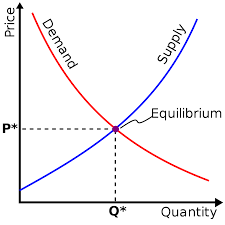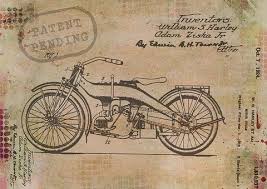
Perhaps You Need To Retrain Yourself And Retail Rather Than Invent
I have a lot of invention ideas in my head and have even studied about the patenting process and have even created a few crude prototypes of some of my invention ideas. Looking back now, I wish I had studied the invention process before proceeding to act on my invention ideas.
This is because I now realized that there is more to inventing than the invention itself. There could be a situation for example where the marketing of the invention is more important than the invention itself.
There may be situations still when knowing if there is a demand for your invention is more important than the invention itself. Many inventors get obsessed with their ideas that they spend a lot of time and money on inventions that no one wants.
Let us take a look at the United States for example, of the over ten million patents issued as of the end of 2019, only two to ten percent of these patents have earned enough money to maintain their protection.
This is a gloomy outlook for would be inventors who all dream of making a lot of money with their so called big idea. Not only would almost all inventors not make money with their inventions, they would also lose money and time in their invention process.
Your Actions Are Understandable
 Before blaming yourself for not studying the invention process first, you should understand that your reaction is very normal. If you studied the life of many inventors, almost all of them started fiddling with their invention idea even before they have studied the invention process.
Before blaming yourself for not studying the invention process first, you should understand that your reaction is very normal. If you studied the life of many inventors, almost all of them started fiddling with their invention idea even before they have studied the invention process.
Being an inventor myself, I know the feeling of an idea staying in your head until it almost becomes an obsession to you. Let this article of mine be a gentle warning for you to study first the invention process before even fiddling with your invention.
This article is not meant to discourage you from going ahead with your inventing, this rather encourages you to take a professional approach if ever you think about inventing something. This might enable you to determine if your invention idea is even worth pursuing.
What Is The Invention Process?
The invention process is a series of actions you need to do before and after you have created your invention. To those still in the stages of daydreaming while fiddling their invention prototypes, you must soon realize that inventing is not merely finished when you created a working prototype of your invention.
Though it is understandable that making your prototypes is one of the most or the most satisfying part of the inventing process, save this action for later and be in the businessman mindset for now.
This means that even if you think that you can make a working prototype of even the most complicated invention, you don’t proceed unless you have determined that there is a demand for your invention.
Is There A Demand For Your Invention?
 This should be the number one question you should ask yourself before you even start creating a prototype for your invention. Be honest. Many inventors take this step lightly. It is very common that inventors would be so obsessed with their idea that they fail to see the obvious.
This should be the number one question you should ask yourself before you even start creating a prototype for your invention. Be honest. Many inventors take this step lightly. It is very common that inventors would be so obsessed with their idea that they fail to see the obvious.
The obvious means that in the real world scenario, there is no or little demand for their inventions. Let me remind you the reader again of how at most only ten percent of the more than ten million patents in the US patent office ever make money.
This means that over nine million patents lose money for their inventors. In the US alone, simple patents can cost in the five US dollar digits. This amount of money is huge and can even land a person in debt.
There have even been online articles where obsessed inventors have lost their homes because they used them to pay for their patent and other inventing costs. The sad news is that these inventors never made money from their invention.
An Inspiring Yet Frightening Story:
 If you don’t think that inventing something can become an obsession, just watch this video from the YouTube Channel InventRightTV:
If you don’t think that inventing something can become an obsession, just watch this video from the YouTube Channel InventRightTV:
Video: This Invention Sold $100,000 On QVC In 7 Minutes
I suggest that you watch the entire video, but if you just want a summary of the video, here are the key points. The couple spent more than US$ 2.5 million for their plastic plate invention. They took the money from their retirement fund.
Another key highlight of the story is that they were rejected by QVC several times before they were given permission to stock their products on QVC’s shelves. Lucky for them, as the title suggests, they sold their invention within minutes.
The story is inspiring in that it took them a long time to perfect their invention, they spent millions of dollars of their own retirement fund and they were rejected several times by their retailer customer, but they still persevered and succeeded.
This might seem a happy story, but let’s look at the flipside. What if they didn’t succeed? Remember that this couple spent their retirement fund just to chase their dream of inventing something.
Imagine if this couple’s invention didn’t sell and what would have happened to their retirement fund? Gone into thin air. Can you do the same thing? Remember that this couple’s invention is a simple plate with a cup holder in the middle.
But this seemingly simple invention cost them more than US$ 2.5 million. Do you have this much spare money? Other people would have retired comfortably with this much amount of money.
Get Feedback and Even Orders From Potential Customers:
 This the best thing you can do to at least have a good idea that your invention would sell. Customers have the final say if your invention would sell and not you. All too often, inventors get caught up thinking from their own viewpoint only and not from the customers.
This the best thing you can do to at least have a good idea that your invention would sell. Customers have the final say if your invention would sell and not you. All too often, inventors get caught up thinking from their own viewpoint only and not from the customers.
Another benefit that you could get from contacting potential customers is that you get to know what your invention lacks in terms of marketability from the point of view of the customer. This information could be very helpful when you are developing the prototype of your invention.
I realize that for many inventors, contacting potential customers could be one of the hardest and mentally draining activity they have to do. But let me assure you, this is a required action if you want to succeed as an inventor.
What It Means To Have An Invention
To be able to invent something means that you have just created something that is unique to the world. It does not mean that you would be rich or even a famous person. It just means that you have created something that no one has ever created before.
The design of your invention is an Intellectual Property in your hands which might bring you fortune and fame. When something can make you money, the government and other people are interested. This is the start of your problem with your invention.
The government would want you to pay them a great deal of money just so you can claim to have a right to your own invention. And even if you have this government endorsed claim, you cannot ask for the government to assist you once someone infringes on your rights.
Then there are the copycats, counterfeiters and those other people who infringe on your right to your invention. There have been inventors who lost their entire livelihood because their invention has been counterfeited.
The Patenting Process
 Most inventors don’t even have the proper financial resources to go over the patenting process. Patenting is expensive and skimping on it can lead to much bigger financial loss at the later stages of your inventing process.
Most inventors don’t even have the proper financial resources to go over the patenting process. Patenting is expensive and skimping on it can lead to much bigger financial loss at the later stages of your inventing process.
That is why instead of inventing first, you should first strive to earn money just enough to adequately patent your product. This might entail working as an employee while you go over the prototyping stages of your invention process.
Creating Prototypes
Let me be direct. Creating prototypes can be very expensive. This is because you are creating a product that has never been created before and the parts or spare parts needed won’t be available anywhere. Most of the time, you have to improvise and this could be difficult.
The long prototype development process can be very frustrating. Because you are creating prototypes based from non-standard parts and untested knowledge, creating prototypes can drain you emotionally. This is why you should have outlets should frustration set in.
The Paperwork and Legal Issues
These can be mentally draining and may even entirely put you off the invention process. Calling up potential partners, Contract negotiations, Licensing vs. Manufacturing, Taking On counterfeiters are a big paperwork and legal issue to inventors.
If you think that creating something in your workshop is enjoyable to you but not the paperwork and legal aspects of it, you might just be a hobbyist and not prepared to bring your invention to the world.
RETAILING VS. INVENTING
 I’m not here to tell you not to invent but just retail instead, I’m here to tell you the viewpoint from the retail side and not from the inventing side. It is for you to decide if you are interested in retail instead.
I’m not here to tell you not to invent but just retail instead, I’m here to tell you the viewpoint from the retail side and not from the inventing side. It is for you to decide if you are interested in retail instead.
You Don’t Have To Pay For Patent Costs Or Go After Counterfeiters.
These two benefits are already very good. You don’t have to pay for expensive patent costs ranging in the several thousands of dollars. You can already use this money to buy retail products that you want to sell or use it to market yourself.
You do not also have to go after counterfeiters. This job is done by the actual manufacturers and inventors of the products themselves. All you need to do is to sell their product and this is much easier than going to court going after counterfeiters.
I’m sure I don’t need to tell anyone how expensive and bothersome going to court is. In the US alone, litigation costs for patent infringement can cost in the hundred of thousands in US dollars.
If you are an average inventor or a small manufacturer, you cannot do anything if someone infringes on your right because you have no money to actually take them to court. You may have money for one infringer but how about for several infringers?
This is the reason why many would be inventors stop inventing altogether when they realize that they cannot protect their invention. Think about this before you even start fiddling with your invention idea.
You Have A Ready Product
 Unlike inventing where you are not sure if your invention would be created or even sell, with retailing an existing product you already know that the product works and there are people selling it.
Unlike inventing where you are not sure if your invention would be created or even sell, with retailing an existing product you already know that the product works and there are people selling it.
You eliminate the costly and time consuming process of prototyping a product which may or may not work. All you need to do is to sell the product better than the others are selling it. This could be a much simpler task for you.
You might find that you are a better marketer/retailer of a product than an actual inventor. You can use this skill to sell other products that you think might bring you more money. Unlike selling your invention which locks you to your invention, you are free to sell much more marketable products.
You Can Consign
If your retailing strategy is based on consignment, you don’t even have to spend much on your products. If you manufacture your own inventions, you have to have capital for creating your invention which could mean spending on raw supplies, warehouse, machinery, salaries and so on.
With a consignment strategy, most of the risk is taken by the people who consign their products to you. Unless you are able to license your invention, you could find that manufacturing your invention is a very risky financial strategy.
You Can Setup An Online E-Commerce Shop
 One word: Amazon. Amazon does not invent things but its owner, Jeff Bezos still managed to be the most richest man in the world at present. Amazon does not even own the majority of the product it sells, but it still managed to be one of the biggest companies in the world.
One word: Amazon. Amazon does not invent things but its owner, Jeff Bezos still managed to be the most richest man in the world at present. Amazon does not even own the majority of the product it sells, but it still managed to be one of the biggest companies in the world.
Undeniably, setting up your own e-commerce shop is arguably easier and cheaper than trying to invent something so useful that it would make you a millionaire or even a billionaire and make you popular.
You don’t even need to create your own e-commerce software. There are already a lot of e-commerce software for sale that you don’t have to start from scratch. All you need to be is a good marketer to profit from it.
Conclusion
 The inventing process is a time consuming and very expensive process. Creating and perfecting your prototype is just one step in the inventing process. There are much harder steps that you might hate so much that you might just want to create prototypes as a hobby.
The inventing process is a time consuming and very expensive process. Creating and perfecting your prototype is just one step in the inventing process. There are much harder steps that you might hate so much that you might just want to create prototypes as a hobby.
If you are this person, maybe retailing is better for you. The task of retailing is easier and does not include a lot of the financial risk of the invention process. You might even earn more money being a retailer than an inventor.
You might also like to read the article:

Are Patents Worth It?
Many inventors spend a long time developing their inventions. They think about it for a very long time and when they decide to create it to see if their idea is feasible they usually spend a lot more time and money in creating a working prototype. Naturally inventors would want to recoup their investment in time and money and make profits probably a big one. They naturally...